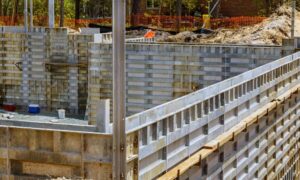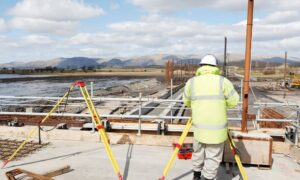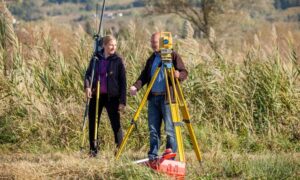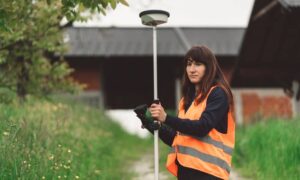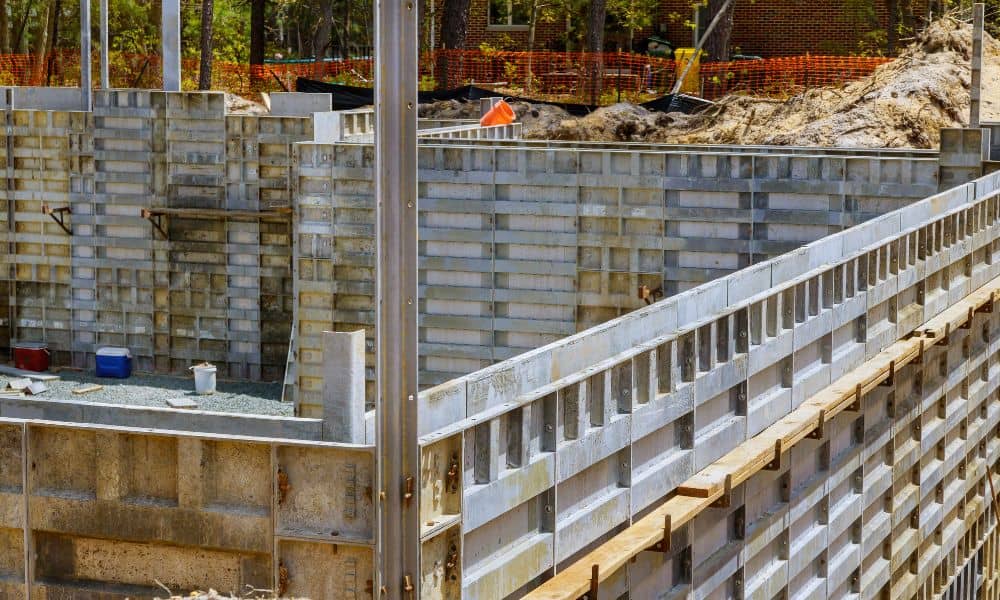
When you start a new build or home addition, you expect things to go smoothly. The plans are ready, the permits are in, and you’ve hired a surveyor to mark where everything should go. But what happens when your construction staking survey goes wrong — or worse, your surveyor disappears before finishing the job?
It might sound dramatic, but this problem shows up more often than you’d think. On Reddit and local Facebook groups, homeowners and builders keep sharing the same story: the surveyor set a few stakes, vanished for weeks, and now the crew is waiting with concrete trucks on hold. In Bridgeport, West Virginia, where properties sit close together and lots often slope, bad or missing staking can turn into a real mess — sometimes even a boundary dispute with your neighbor.
What a Construction Staking Survey Really Does
A construction staking survey is one of the most critical parts of any building project. It’s when a licensed land surveyor takes the design from your plans and marks its exact position on the ground. Those wooden stakes tell builders where to pour the foundation, run utilities, or set driveways and fences.
Think of it as the bridge between paper and reality. Without accurate staking, even a small error can shift a wall, driveway, or footing by a foot or more. That may not sound like much, but in Bridgeport’s tighter neighborhoods, that could mean building on a neighbor’s land or inside a utility easement.
Why Things Go Wrong
Sometimes, the surveyor truly vanishes — they get overloaded with work, miss calls, or subcontract the job to someone who doesn’t finish. Other times, mistakes happen because the project information wasn’t clear. If your builder uses an outdated site plan or the surveyor doesn’t double-check property corners, the stakes might not match the approved layout.
In rural or hilly parts of Harrison County, things get trickier. Old plats and metes-and-bounds descriptions can conflict with visible features like fences or driveways. That’s why many of those frustrated Reddit posts start with, “The stakes don’t line up with my deed.”
Bad staking doesn’t always mean bad intent — sometimes it’s just poor communication. But either way, you can’t move forward until it’s corrected.
First, Don’t Panic — Verify What’s Wrong
When you realize something isn’t right, pause before calling in the concrete crew. Take a walk around the site and note what looks off. Do the stakes seem out of place compared to fences, pins, or old markers? Did your builder or inspector raise concerns? Snap clear photos of every questionable spot.
Next, review any documentation you received from the surveyor. A legitimate professional will provide a staking sketch or coordinate sheet showing what each stake represents. If you didn’t get one, that’s a red flag.
Sometimes, the issue isn’t the survey itself — it’s the plan being used. Confirm that your surveyor worked from the latest site plan approved by the city or county. Plans change, and using the wrong version can throw everything off.
When Your Surveyor Stops Responding
If your surveyor has gone quiet, start by sending a short, polite message reminding them of the pending work. Many times, this gets a quick response. If not, move on quickly — waiting too long can delay inspections or construction schedules.
Find a licensed land surveyor who can perform a verification or retrace survey. In Bridgeport, you can confirm licensure through the Board of Professional Surveyors. A reputable surveyor can use existing benchmarks and your approved plans to double-check all staking points.
A verification survey will show whether your layout was done correctly. If it wasn’t, you’ll have documented proof to support a correction or refund request. It also gives your builder confidence to keep working without risk.
Avoiding Costly Mistakes Before Concrete Day
A misplaced stake can cost thousands once construction begins. Imagine pouring a garage foundation only to discover later that it crosses the property line. Fixing that means cutting, demolishing, or even moving structures.
Before any foundation or slab work, take time for a stake walk — a simple on-site review with your builder and surveyor. Walk the lines together, comparing the stakes to your site plan. Ask questions like, “Is this corner the property line or just the edge of the pad?” and “Where’s the setback from the right-of-way?”
This quick walkthrough catches most errors before they turn into expensive rework.
The Role of Clear Communication
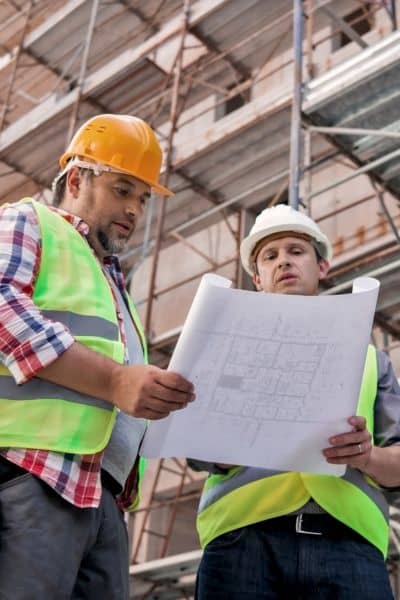
Every solid project depends on communication. Keep your surveyor, builder, and inspector in the same loop. Send updated plans, mark any design changes, and ask for written confirmation that staking reflects the latest version.
If your builder brings in a third-party surveyor, make sure they share data with the original professional. A mismatch between two sets of coordinates is one of the biggest reasons foundations fail inspection.
And remember — good surveyors don’t disappear. They communicate progress, send field sketches, and stay available until the project is signed off.
Why This Matters More in Bridgeport
Bridgeport’s terrain and property layout make precision essential. Many homes sit on slopes near Simpson Creek or Brushy Fork, where even small grading differences affect drainage. Driveways often run close to neighboring lots, and retaining walls must follow specific setbacks.
That’s why hiring a construction surveyor who understands local regulations and topography is key. A pro familiar with a mix of older deeds and modern plats can spot potential conflicts early and help you avoid disputes before they start.
How to Choose the Right Surveyor Next Time
When hiring for your next project, look for more than a low quote. Ask how they handle staking verification, how soon they deliver sketches, and what technology they use. Surveyors using total stations, GPS, or drones for mapping tend to deliver faster, more reliable results.
Request references from recent clients. A professional who confidently shares contacts and examples of their work is less likely to ghost you mid-project.
Finally, set expectations up front:
- When will the fieldwork be done?
- When will you receive the staking sketch?
- Who can you call if something looks off?
Having these details in writing protects everyone involved.
Turning a Bad Experience Into a Smart Lesson
If your construction staking survey went wrong once, you’re not alone. Many people have faced the same frustration — a vanishing surveyor, a confused builder, or a few crooked stakes that stopped everything cold.
The good news is that every mistake teaches something. Whether you’re building a new home, a detached garage, or a commercial pad, choosing a reliable surveyor and double-checking their work early saves huge headaches later.
Before your next pour, slow down, verify your stakes, and confirm your surveyor’s credentials. Because in construction, an inch of prevention is worth a yard of correction.
